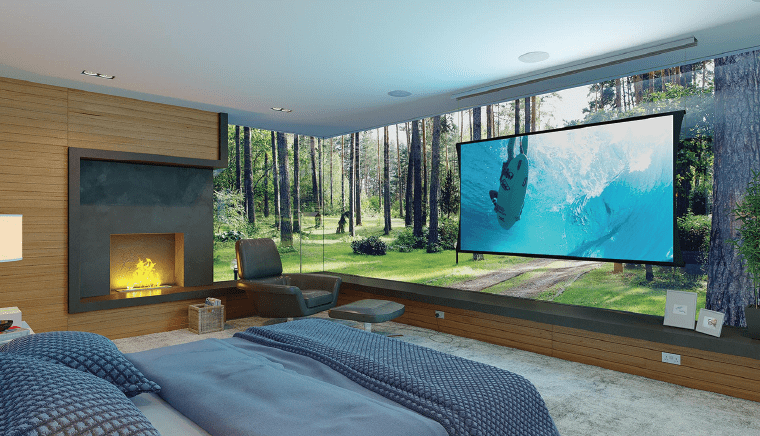The right remote is your key to a smart home
People have been dreaming about home automation since before George Jetson moved in with Jane. Though we haven’t yet achieved robot maids and flying cars, the Jetsons’ vision of a push-button future is now a reality. If the sky’s your limit, a premium installation will put climate control, lighting, home entertainment, surround sound, security and more at the tip of your finger.
“Most of our customers are just looking to simplify their lives,” says Rick Shook, president of Rick’s Electronics Boutique in St. Petersburg, a full-service shop that handles everything from tricking out state-of-the-art home theaters to repairing grandma’s VCR.
Fixing a VCR in 2018 may seem counterintuitive, given that Rick’s Central Avenue storefront is stocked full of drool-worthy gear — Sony TVs, Sonos speakers, high-end Parasound receivers and amps — but the market still caters to luddites. Even though the first remote control was developed by the Zenith Radio Corporation in 1950, people are still fumbling to find it, to program it, to switch between HDMI channels. According to Shook, simplicity starts with the remote control, a traditionally inscrutable device that’s been cluttering American living rooms for decades.
Three routes to the right remote
Home automation is typically controlled in one of three ways: by universal remote control (URC), or by the lesser-known, more sophisticated systems Crestron and Control4.
The universal remote, which looks like a standard remote bulked up with a screen and Wifi connectivity, can be programmed to control a wide range of equipment beyond your basic television. It is the simplest and most affordable way to operate a smart home. Crestron and Control4, both sold by licensed dealers around Tampa Bay, come with a more elaborate set-up and user interface.
“The Pentagon and Google are controlled by Crestron,” says Joey Carder, sales manager and designer at Sound Integrity, a custom video and audio installation company in East Manatee County. “We use Crestron in high-end jobs for customers. You can expand to the whole house with multiple rooms of audio and video controlling multiple systems. Control4 has that capability, but Crestron does more.”
That doesn’t mean that Crestron is the right solution for every home. “Crestron is not for everybody, because everybody doesn’t have the budget to do a Crestron system,” Carder says. “Control4 and URC are still great and can do your everyday home automation. And certain products work better with one or the other, but it’s about what fits best in each home.”
What do you want your remote to do?
How you choose to operate your gadgets ultimately comes down to personal preference. Shook offers plenty of systems controlled by tablets and programmable universal remotes, but his best seller is still Old Faithful. “Most people want a [basic] remote,” Shook says. “They want to be able to just flip through the channels.”
Simplicity, remember? But that’s simplicity in operation, not features, and the list of household items ready to be integrated into your smart home is extensive. “Lighting is very big,” Carder says. “Shade control is becoming very big in Florida because of high-end condos. Pool control is another one we’re running into.”
Take for example Shook’s personal Nest set-up. Best known for selling a thermostat you can control from your phone, Nest has expanded its product line to include operating smart door locks, smoke detectors, security cameras and household appliances. Shook’s system includes adjustable temperatures for his home and business, current smoke detector readings, a full log of every time his front door opens and a live video feed of his store showroom and offices.
So how much will remote control cost ya?
According to Carder, a one-room system with a URC can run anywhere from $500 to $700, while a basic Control4 operation starts at just under $1,000. For clients looking to install a top-of-the-line Crestron system, the price can run to tens of thousands of dollars. Says Shook, “Home automation isn’t a low-end thing.”
Bargain hunters can achieve some of the same result without all the fit and polish by using off-the-shelf equipment sold by major technology companies. Apple, Google and Amazon all offer smart speakers and TV-connected boxes capable of controlling an assortment of appliances, from your smartphone to your tablet. Companion products made by Nest, Phillips, Sonos and others allow homeowners to add whatever amount of automation they’re comfortable with.
“Home automation is based on what fits best in each home,” Carder says. “We have a lot of people up in age who have a hard time grasping automation, but then they learn it’s easier [to automate] than to use 20 remotes.”




